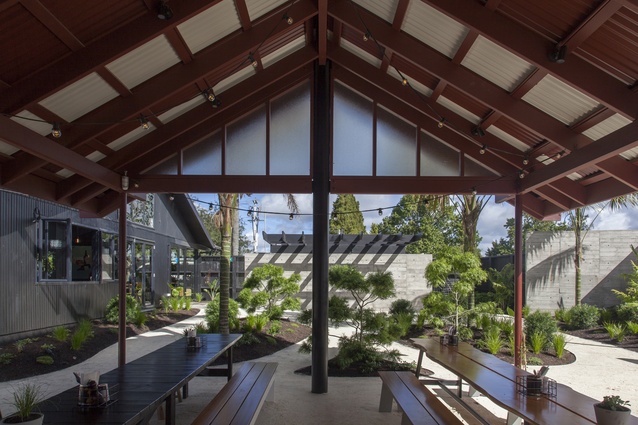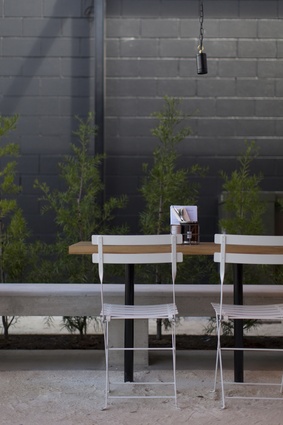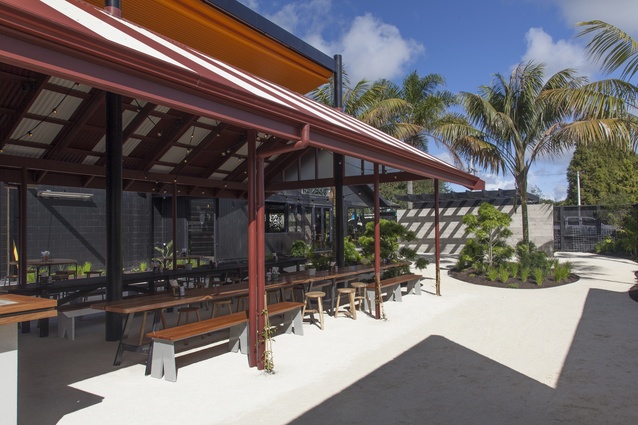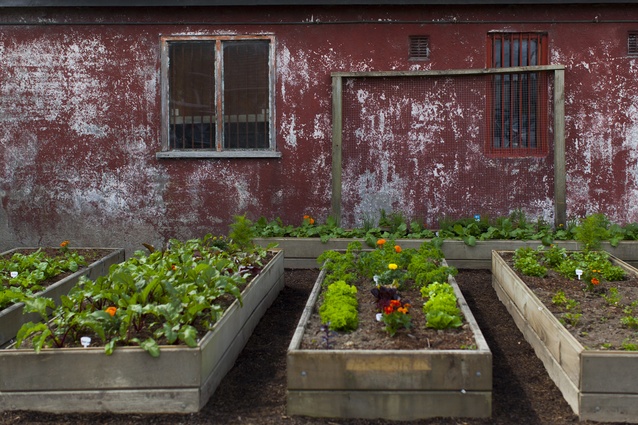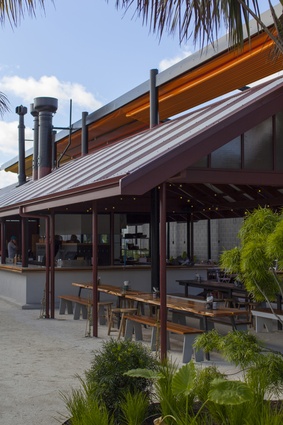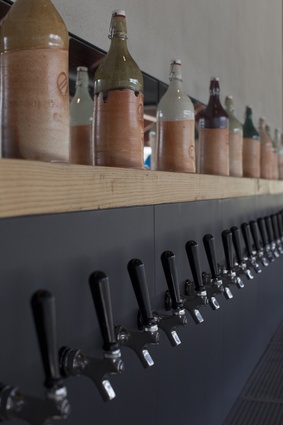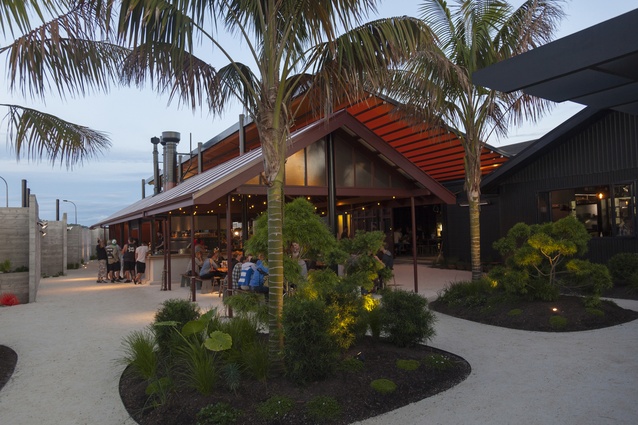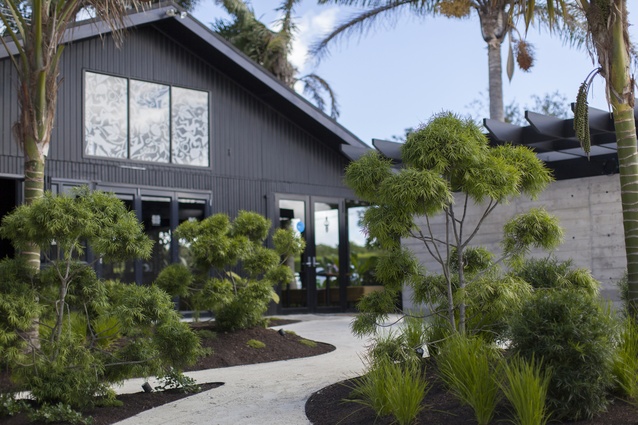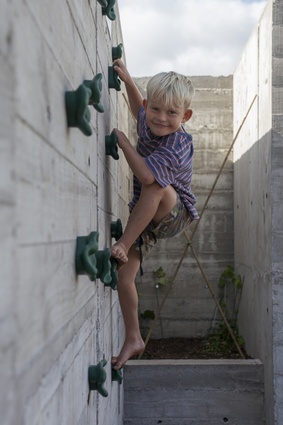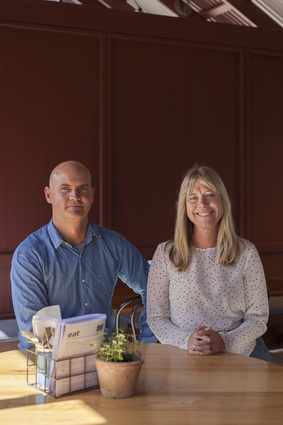Subtropical biergarten: Hallertau
Designer Allistar Cox has created an inward-facing 'lost garden' extension for Auckland brewery and restaurant Hallertau, launched at the 10th anniversary of the restaurant in April. Allistar’s hospitality portfolio includes Golden Dawn in Ponsonby, Matterhorn in Wellington and the Town Mouse in Melbourne.
Amelia Melbourne-Hayward chatted with Allistar about the design and construction of this spacious new addition to the ever-popular Hallertau brewery in Riverhead.
Amelia Melbourne-Hayward: Are there any overarching themes behind the new brewery extension from a design perspective?
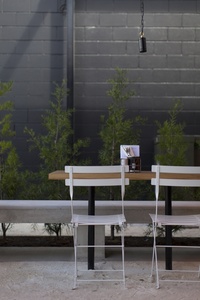
Allistar Cox: A secret garden… When we started the project, the brewery wasn’t surrounded by suburbia, but we knew it was coming. We liked the idea of a secret over grown garden, encased by high walls – somewhere that was inward rather than outward facing, a space you could get lost in. We created a large garden with light going around it, even with its concrete walls.
Amelia Melbourne-Hayward: What sort of materials have been used for construction and why?
AC: Simple and natural materials. We used striped corrugated iron for the roof – reminiscent of those striped roofing on villa verandahs, and rather old school. The stripes also give a sense of celebration, they are rather carnivalesque.
It’s a simple and humble shelter – a steel and timber frame and timber, rather like a bus shelter, but it’s 30 metres long. The biergarten is sizeable. There are not many of that scale in New Zealand, it’s a 600m2 space, broken up by the central kitchen and bar island that creates intimate dining areas.
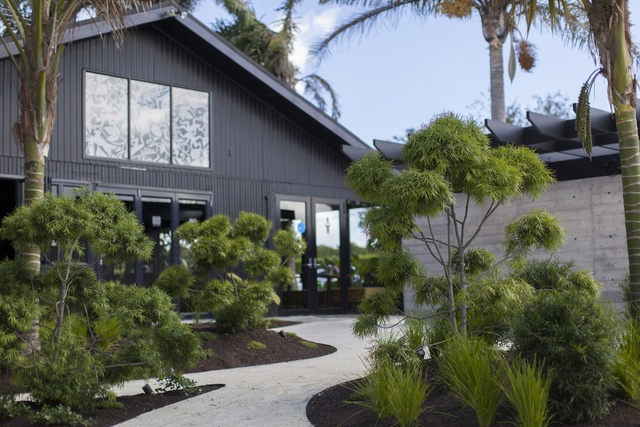
The ground covering is interesting – similar cover is found in Spain, in petanque courts. It’s a lime sand that will harden over time, in six months or so it will flatten and become more of a hard clay.
I love concrete. It was poured on site and eventually the concrete walls will become overgrown with creepers – giving the feeling of the ‘lost garden’, although some of the concrete will still be visible. Concrete absorbs sound, which is great considering the biergarten will soon have close neighbours. Concrete also has a sense of permanence and weight; the structure feels like it has been there forever.
Amelia Melbourne-Hayward: What type of plants have been used and what is the idea behind the landscaping?
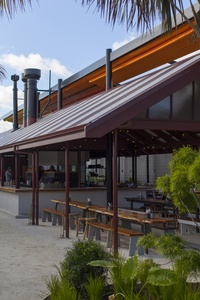
AC: The landscape designer was Jared Lockhart from Jared Lockhart Design. He was great to work with. The garden references the work of the late Italian architect Carlo Scarpa, with its concrete and overgrown ‘secret garden’ feel. The planting is a mix of lush, tropical plants and natives, which add colour and finish the area off.
Amelia Melbourne-Hayward: What were the biggest challenges to this project?
AC: The resource consent process wasn’t easy and we sunk an enormous amount of time into that. The ground itself was also challenging – there was a thick layer of top soil and so we didn’t hit solid ground until around 1.5 metres down. I’ve definitely designed for worse conditions than that, but it was difficult. Other than that, there were just the normal restraints encountered by any construction project, like the weather.

